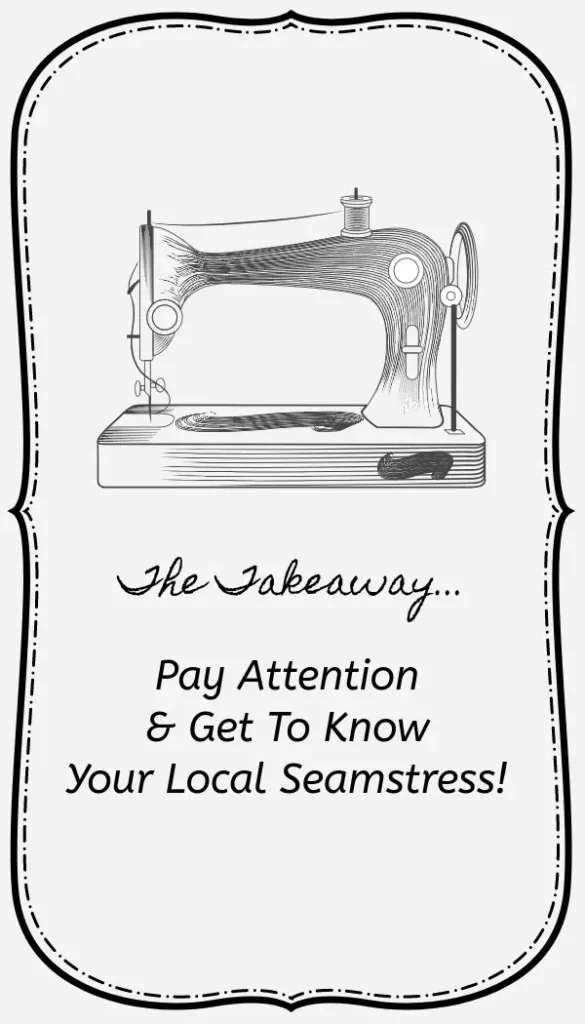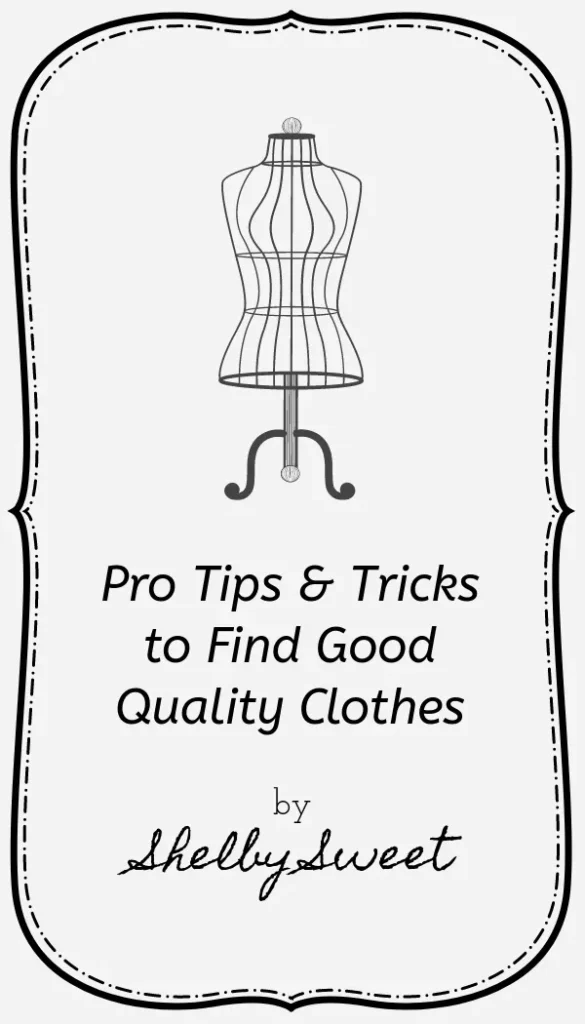
We’ve been posting a lot of blogs lately about how important it is to purchase good quality clothes in favor of cheaper brands that are likely to fall apart after a few washes. While we’ve mainly been discussing the benefits of higher quality clothing, what we haven’t talked about is what to really look for.
Of course, typically clothing made from higher quality materials will cost more than your average Forever 21 or Shein haul; however, just because the price of something is more expensive, that doesn’t necessarily mean it’s high quality.
So what does, then?
Together, our team has compiled these pro tips and tricks to spot good quality clothes!
Survey the Seams
So that cute top seems just what you’re looking for — but don’t get too excited yet! If you want to make sure it’s as gorgeous on you as it is on the hanger, you really want to examine it closely before you pay good money for it.
First, let’s take a look at those seams! Good quality clothes will have seams that are straight and tight — but not too tight. They shouldn’t pucker. Inspect the inside of the garment for seams that don’t lie flat, unfinished seams, and loose threads.
What do I mean by pucker? Because, while I’m sure we’ve all heard the iconic Elle Woods quote — “But, the thing is, you can’t use a half-loop stitch on China silk; it’ll pucker” — not all of us have her keen eye for fashion and know how to spot a puckered seam!
Puckering occurs when there is too much tension while sewing, and the fabric around the stitches bunches up, giving your piece an untidy, bulgy look. Puckering and seams that don’t lie flat are common in fast fashion, because most garments are made very quickly without much regard for proper sewing techniques.
Upon closer inspection, you can also start to see tiny fabric threads poking out at the edges, which means the seams haven’t been properly finished. If the threads are already coming undone before you buy the piece, it’s probably not something you want to spend your hard-earned money on. The fabric can unravel to the seam and cause holes. It’ll probably only last a few washes before it quickly falls apart!
And, last, check that the thread doesn’t break easily. Fast fashion is famous for cheap thread! You could pretty much rip a seam out with your bare hands, or rip a pants hem by getting your toe stuck in it — but a quality garment will hold together (unless you are very determined).

Inspect the Hems
There are many different types of hems for different styles of clothes, but you always want to make sure they are fashioned securely and appropriately for the desired effect. A skirt, for example, could have a small, light, rolled hem on a sheerer fabric for a lot of flounce, or a weighty hem on winter-weight fabric to keep the fit under control (a good fit helps to keep the skirt positioned properly on you throughout the day).
All hems, except those stitched on the outside for a decorative effect, should be invisible from the outside. A good stitch, with good thread, need only grab a few threads of fabric to hold well, hang nicely, and stay sewn for a long time. A big tell-tale sign of fast fashion is cheap thread that breaks easily.
A neat, well-stitched hem is indicative of fewer quality sacrifices made to produce the garment and ensures that your garment hangs well and moves with you rather than against you whenever you move.
Plus, for all our crafty readers out there, a generous amount of fabric at the hem makes it easier to adjust! With a little practice, you can lengthen or shorten your garment to suit your individual height and taste. If you’ve found that sewing is not your thing, you could easily take your garment to a good tailor for them to alter it for you!
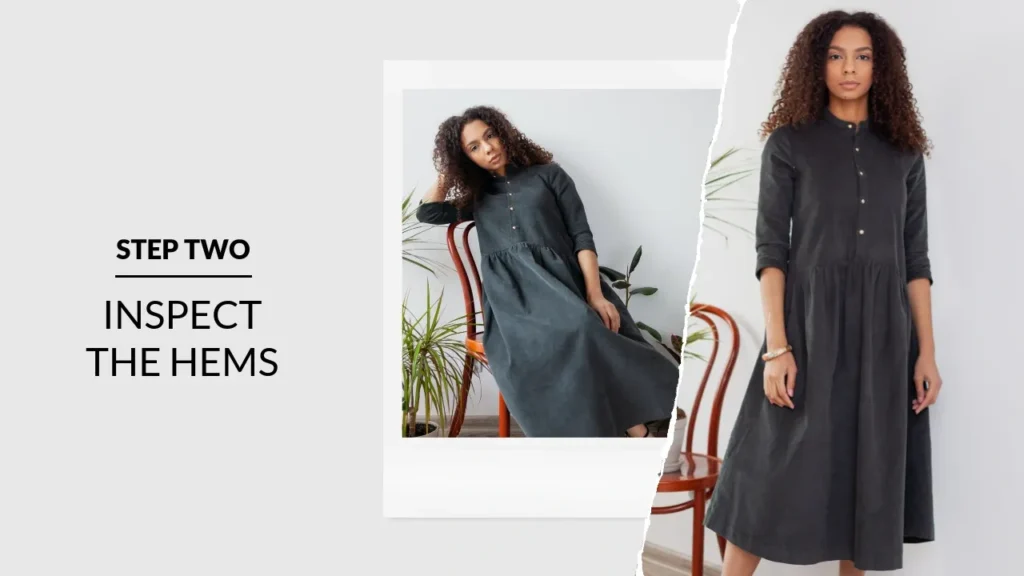
The FTT (Fabric Touch Test)
Before you buy anything, you want to make sure your clothes feel good, because (let’s be honest here) good quality clothes should feel luxurious on your skin!
While this sounds easy enough, you’d be surprised by how many people don’t actually feel their clothes when purchasing them. Just because something looks cute on the outside, doesn’t mean it’ll be comfortable to wear. You want to make sure to test both the inside and outside of your clothes. A piece may have a soft and comfy outer layer, but the inside may be rough and scratchy. If you get in the habit of running your hand along the clothing on the rack, you will begin to recognize when you feel a good fabric.
I know this can be impossible when you’re online shopping — but that’s why most places offer free returns, right? Always check the return policy, that way, if the fabric is uncomfortable against your skin, you have the option to give it back straight away!
While it may seem small, such a simple thing as the feel of the clothes on your skin can make a huge difference in how much you enjoy wearing it.
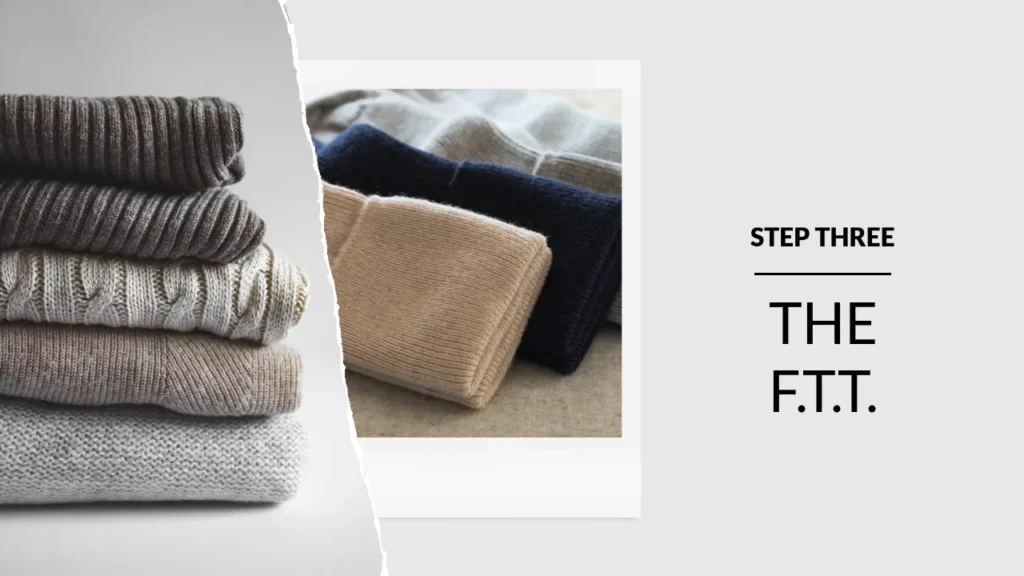
Eyeball the Pattern Matching
Perhaps one of the most obvious ways to spot quality clothes (if the fabric has a pattern) is to take a look at the seams or pockets — any line where patterns meet — for how well the patterns match. Stripes and plaids are obvious, and it can take some skill to cut the fabric so that they match or at least go together at the seams.
It can’t always be perfect, but it can be very close.
Floral patterns can be cut so they go together, if not match up, so it’s hardly noticeable. Organic fabrics (like wool, cotton, and linen) are easier to match because the fabric can be somewhat shaped — wool can be shaped a great deal — and if a stripe is a touch off, the fabric can be stretched or shrunk to make it match.
Say, for example, you find your to-die-for plaid top — in your favorite colors! Plaid patterns most often need to line up both horizontally and vertically — so did they go to the extra effort to match the seams, even so? Or did they jumble the pattern pieces together as closely as possible to cut costs?
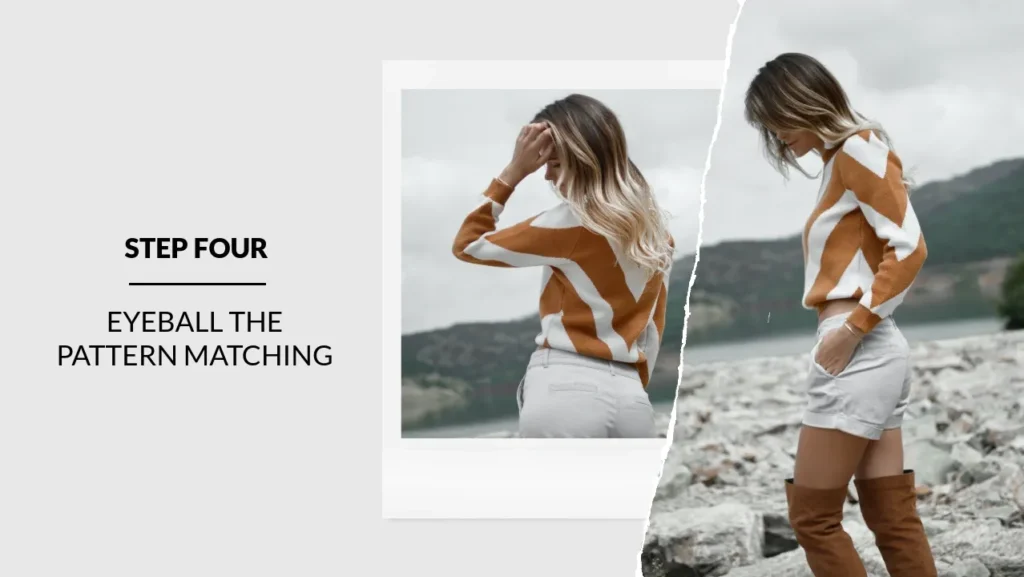
Zip those Zippers!
Nothing is more aggravating than when you’re trying to wriggle into your favorite party dress or cute, flouncy skirt — and the zipper breaks! While safety pins are a last resort, and you may be able to make them work in a pinch — try to prevent this before it happens by checking the quality of the zipper before you buy.
First of all, you’re going to want to check what material the zipper is made out of. Metal zippers are notoriously more reliable than plastic ones, as plastic breaks more easily. You can find quality plastic, but these are solid, well-made zippers that are usually made smaller than metal and found in the “invisible zipper” category. If you are going to be tugging and pulling (on a jacket or pant closure, for instance), metal is usually your best bet.
Then, take a look at how the zipper set in. It should lie flat and (unless it’s a fashion detail) be completely unexposed and inobtrusive. Make sure the teeth of the zipper lie in a straight line (no crooked seams!). The reinforcement tape of the zipper should lie flat and fit smoothly against the seam of the garment to ensure it won’t pucker or show stress when you are wearing it.
You also want to closely inspect the teeth of the zipper. The surface of the teeth should be smooth, so the slider can easily glide up and down — try opening it and closing it a few times. Make sure there aren’t any mis-matched or missing teeth, and check that they mesh together well — otherwise, your slider will snag, eventually breaking the zipper.
Of course, if the zippers are more of a design feature than a functional application, you don’t need to worry about any of this. If you do purchase a garment with a faulty zipper, you can either replace it yourself or take it to the tailor. But why not save yourself the hassle (and the extra cost) by taking a few minutes to inspect zippers beforehand.
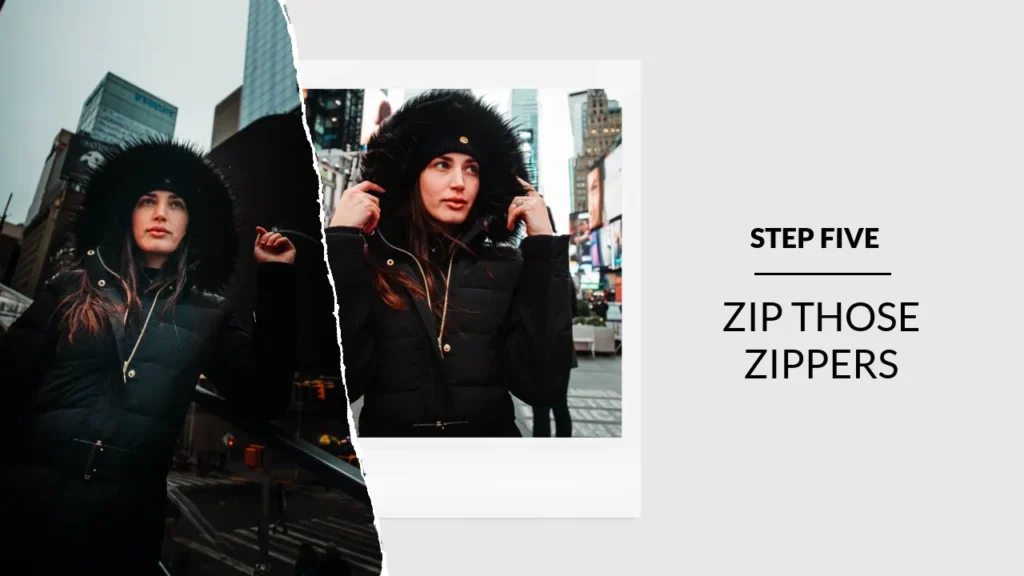
Assess those Buttonholes
Oscar Wilde once said, “A really well-made buttonhole is the only link between art and nature.” While this may be taking it to the extreme, Wilde did have a point that well-made buttonholes can make or break a garment.
The good news is that it’s very difficult to fake well-made buttonholes.
If you take a closer look, the stitching should be set in the garment so as not to cause any puckering or stretching out — the fabric should not be pulling, sagging, or at all affected by the button hole in it. It should lie flat, and the stitching should be dense enough to give the cut stability, and close-set all around the hole to finish the edges of the raw fabric.
They should also be the perfect size for the buttons — too small, and we struggle to get the button through; too big, and the buttons will come undone during wearing. We want to make sure our buttons stay securely in place, because the last thing we want to worry about during an important business meeting is our shirt buttons coming undone! There are much more important things to focus on. It’s an annoyance that can be easily avoided with a few minutes of close inspection!
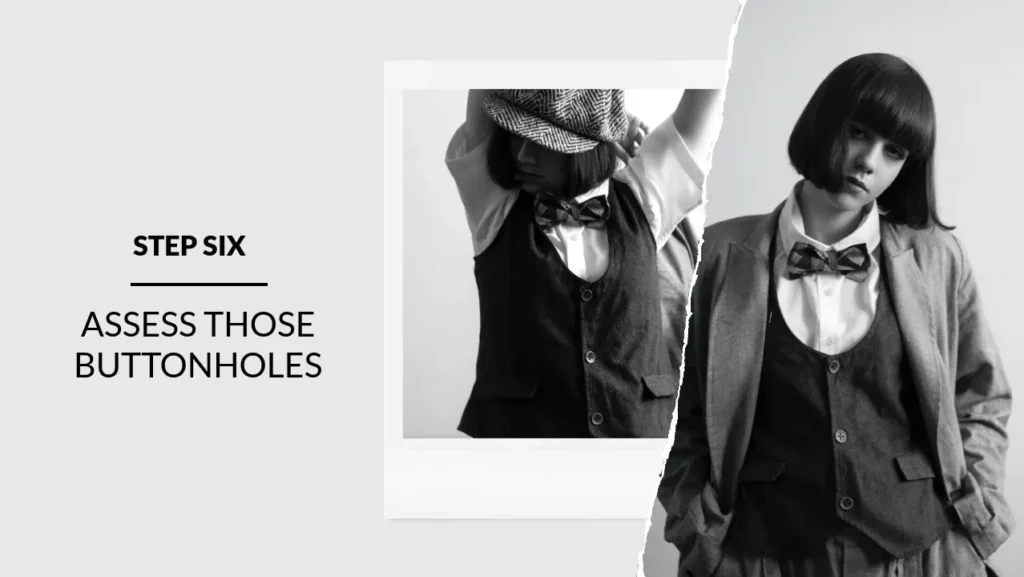
Judge the Facing
A facing is a small piece of fabric that is used on the inside to finish the raw edge of a garment at open areas (like the neckline, armpits, or other areas that would need finishing or stabilizing). It’s primarily used both to hide the seams near an opening for a cleanly-finished look, and to provide a stabilizing layer to protect the fabric from stretching out of shape and/or losing its crisp lines. The fabric used can be the same material as the garment, itself, or it can be a funky pattern or nicely contrasting color to add some interest to the garment!
When clothing companies try to cut corners, the facing is one of the first things to suffer in favor of cheaper alternatives.
For example, take a close look at one of your favorite knit sweaters. You see that woven edge going around the neckline? You should also see the shoulders stabilized by an additional woven or elastic stabilizing tape over the finished seams. In a top made of poorer quality materials, you might see an elastic strip running from one shoulder to the other visible behind the neck. This practice is meant to save money on proper stabilizing; but over time, that elastic will weaken and break or stretch out.
So, choose an option that isn’t so temporary so you can keep your beloved sweater lasting for years to come!

Overall: Pay Attention!!
I know it can be easy to be distracted by a gorgeous-looking dress or a beautiful blouse, but remember — appearances can be deceiving. Take a few minutes to give the garment a closer inspection before you hastily head for the check-out line.
You will get the hang of it. Be patient. Develop this skill set, and it will not only make you look like you really have your act together — but it will save you your valuable time and money in the long run.
Develop your new shopping mantra: Sure, it may be pretty now, but — no matter how good a deal it appears to be, if it’s going to fall apart after one or two washes, is it really worth the money?
Next time you spot attractive clothes, go through this checklist!
We’re looking for garments that are meant to be beautiful and last.
